
Facebook Twitter Instagram YouTube
Written on: July 22nd, 2025 in Education and Outreach, Wetland Research
By Olivia Allread, DNREC’s Wetland Monitoring and Assessment Program
Many millions of years before us Homo sapiens appeared, there lived a vast array of plants and animals in extensive environmental systems we no longer see today. With Earth having formed 4.6 billion years ago, there are certainly a lot of eras between the cloud of dust and gas, to our modern informational age. Though we’re not paleontologists, for this blog installment we wanted to investigate the past, go way back to a time with no humans at all. Let’s venture into our prehistoric periods and discover what creatures may have lived in wetland habitats in the land before time.
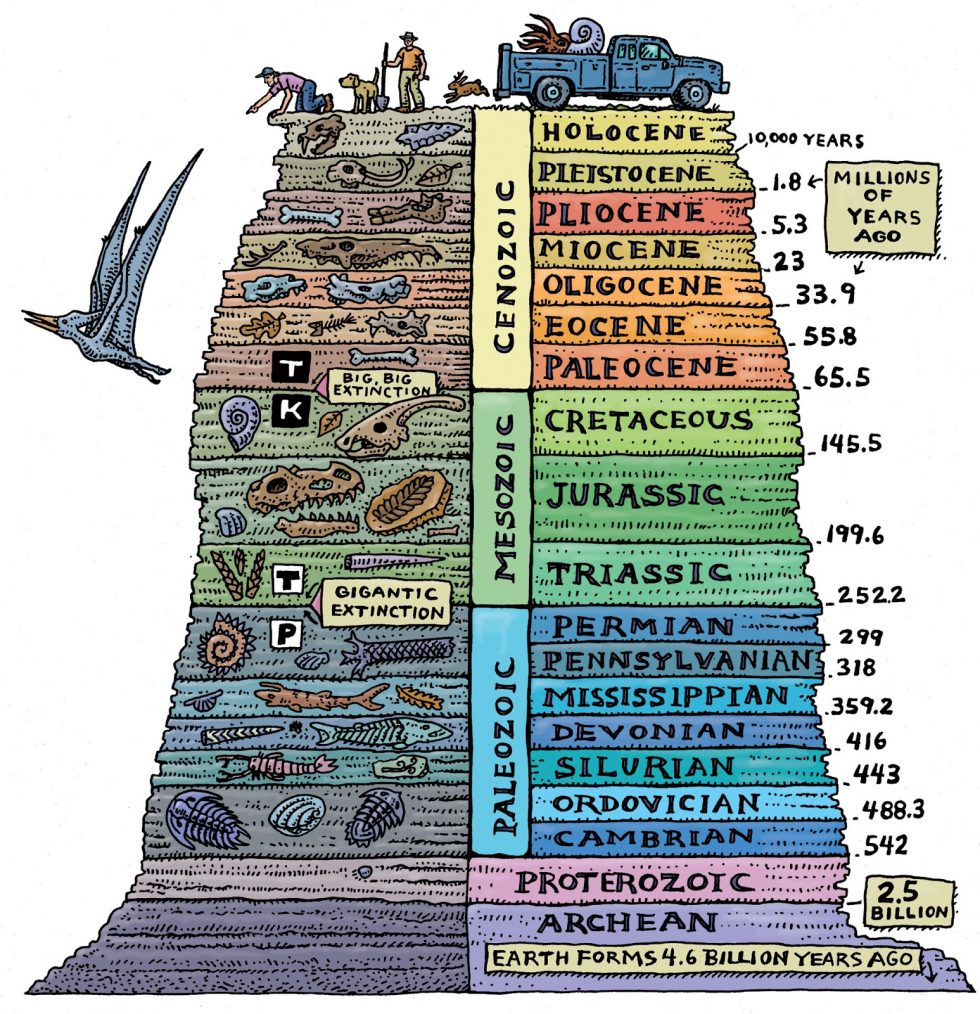
Eyrops
During the Permian period, around 290 million years ago, Earth’s plates formed a single massive continent called Pangea as desert-like conditions were replaced by humid and steamy, wet environments. Queue the insects, amphibians, and therapsids (precursors of mammals) to flourish during this warm time. Eryops is one of the largest known amphibians to ever live, growing up to 7 feet long and weighing up to 440 pounds. These predatory water lovers had many sharp, coned-shaped teeth, suggesting they had a carnivorous diet of mostly aquatic tetrapods and large fish. Research shows juveniles may have lived in vast swamps for protection from land predators, while adults thrived in lowland bank habitats in and around ponds, streams, and rivers. Oddly enough, its fossils have been found in some of the driest North American areas such as Texas and New Mexico.
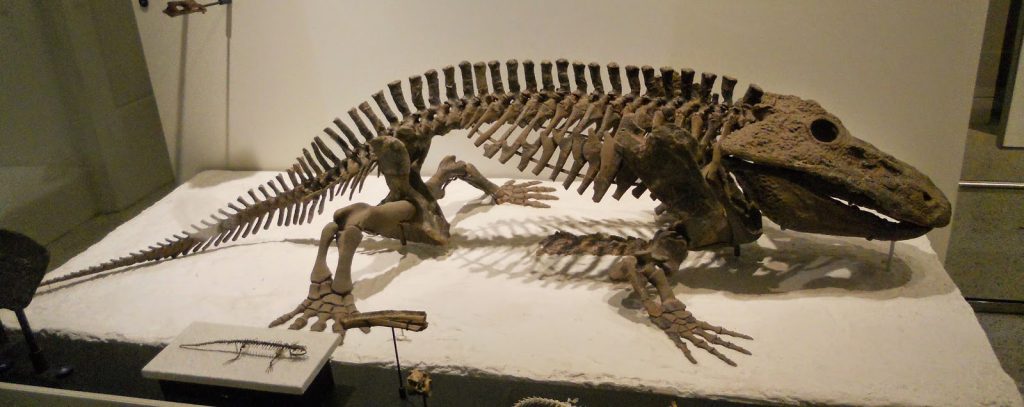
Deinocheirus
Moving on to a quite bizarre looking pot-bellied dinosaur with clawed hands, a humped back, and a beaked head with no teeth. Meet the Deinocheirus. This creature lived in modern-day Asia during the late Cretaceous period around 70 million years ago and clocked in at roughly 15,000 pounds and 40 feet high. But this colossal beast was more of a gentle giant. Based on fossils and their location – what is now Mongolia – scientists believe that this dinosaur was mostly an herbivore feeding on soft plants at the bottom of rivers and lakes but occasionally would snag fish and small invertebrates, hence their lack of teeth. With warm, shallow waterbodies and vegetated floodplains abundant, the Deinocheirus used its hooked claws to grasp vegetation and broad beak to suck up food. Its bone structure and lack of pinched toes suggests it moved at a slow pace, wading through wetlands for the next snack and protection from top predators like the Tyrannosaurs. We think the little tufts of arm and head feathers are its most notable feature.
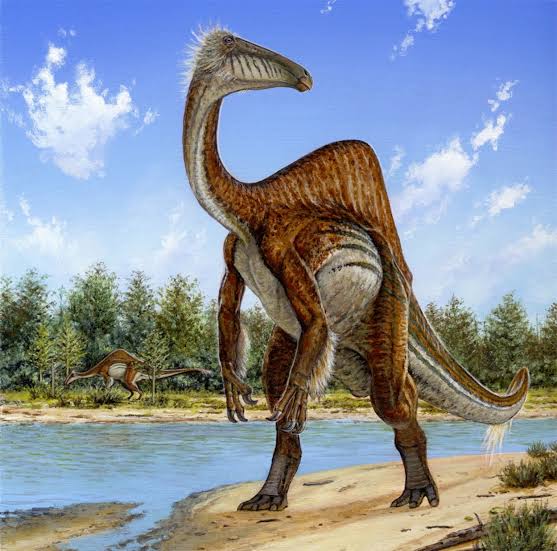
Meganisoptera
Now, we take to the sky. Being the earliest flying insects know, meganisoptera, or griffinflies, were alive during the Carboniferous period about 299 to 359 million years ago and grew to a variety of enormous sizes. With wingspans from 8 inches to 2.5 feet in length, these giants had wide wings with a massive network of veins and spined appendages for holding prey. Meganisoptera enjoyed humid wetlands near freshwater and were carnivorous predators, hunting in-flight for smaller amphibians and insects, even tiny mammals! Like our present-day dragonflies and damselflies, having wings gives you a massive advantage when it comes to survival – you can cross obstacles such as water, access more food, and escape predators quickly. Though there is some debate, many scientists believe there was a massive influx in global oxygen levels during the Carboniferous period which allowed many land-living invertebrates to get to huge sizes. Give meganeura or meganeuropsis a Google to see just how big we’re talking.
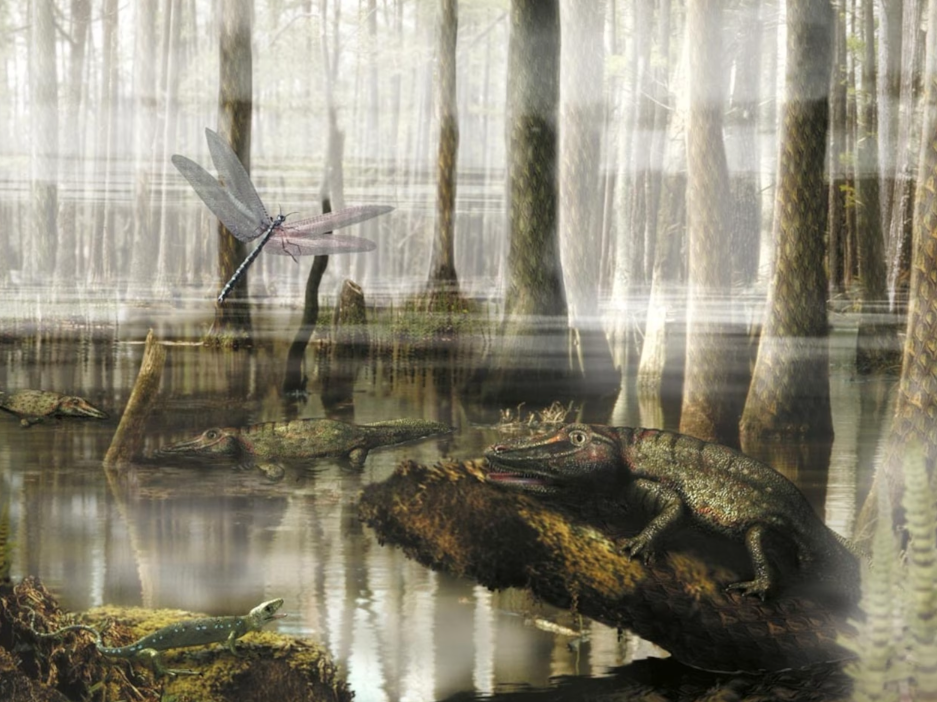
Asteriornis
This creature lived right before Earth really changed. About 700,000 years before the Cretaceous-tertiary extinction wiped out about 50% of plants and animals and all non-avian dinosaurs, there lived the Asteriornis. Not only is it considered one of the earliest waterfowl ancestors, but fossils discovered in 2020 indicate it could be the earliest known ancestor of every chicken and duck on the planet. Woah. Waddling along the shores of modern-day Europe with subtropical marine climates, this long-legged creature most likely could fly and was roughly the size of a quail. Though small, the shape of their legs and beak suggests they were well adapted to shoreline habitats and potentially omnivores, plucking and dipping for food along the coast. Also known as the “Wonderchicken”, paleontologists and bird researchers continue to look for evidence of this early avian species, as it may help fill gaps in the origins of bird diversity.
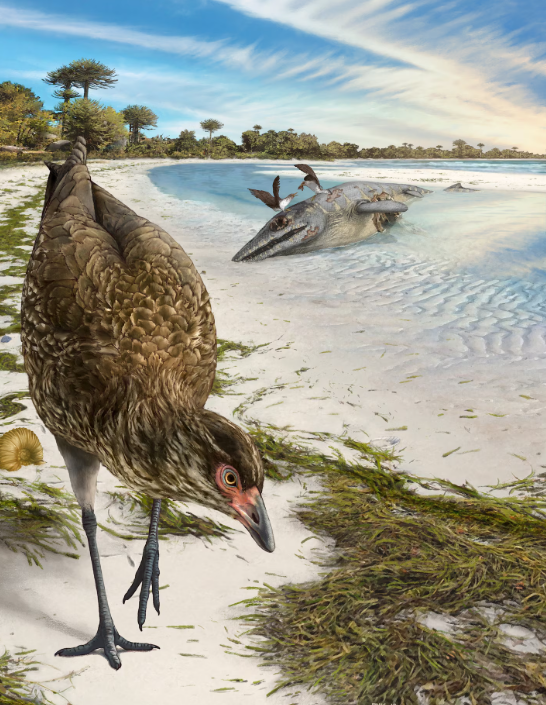
We understand that prehistoric wetland habitats were not the same as they are today. But wetlands have a long geologic history on our planet, and in some instances, have dramatically impacted the Earth’s environments. Studies have shown that wetlands started shaping pathways of change as early as the Paleozoic era through the evolution of algae and land plants. So, though the flora and fauna that inhabited prehistoric habitats were far different, as wetlands evolved, so did their many critical functions and links to Earth’s cycles. It’s difficult to wrap our heads around a Devonian marsh plant or oceans filled with massive killer reptiles like the Plesiosaurs because history is one of the most challenging things to interpret. But in our current times of climate instability, looking at past species and ecosystems can allow us to understand how current ones may respond to large scale changes on our planet. Hopefully this blog post inspires you to look up other creatures of ancient habitats, dig into wetland history in America, or even investigate the geologic timeline of Delaware. If anything, surely this got you in the spirit for the new Jurassic World: Rebirth movie.
One of the best things about science is that there is always room to discover more.